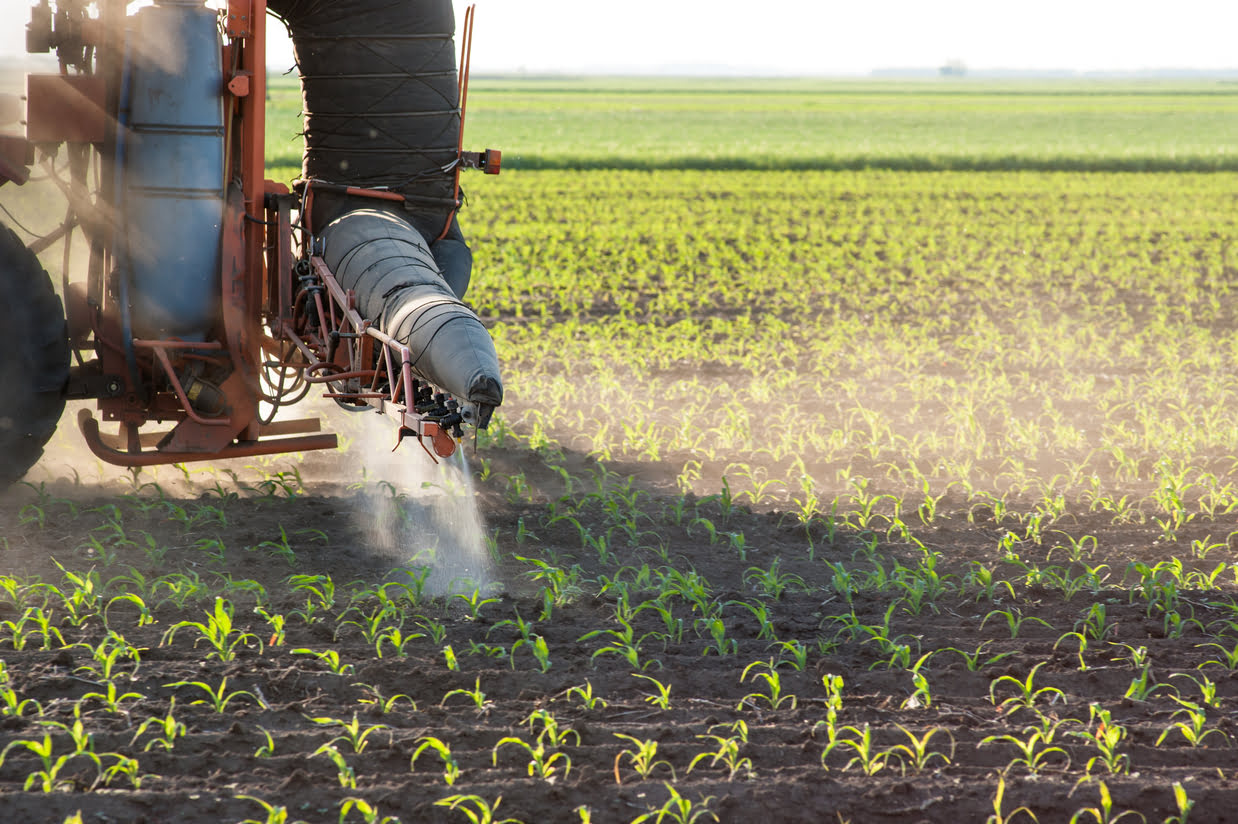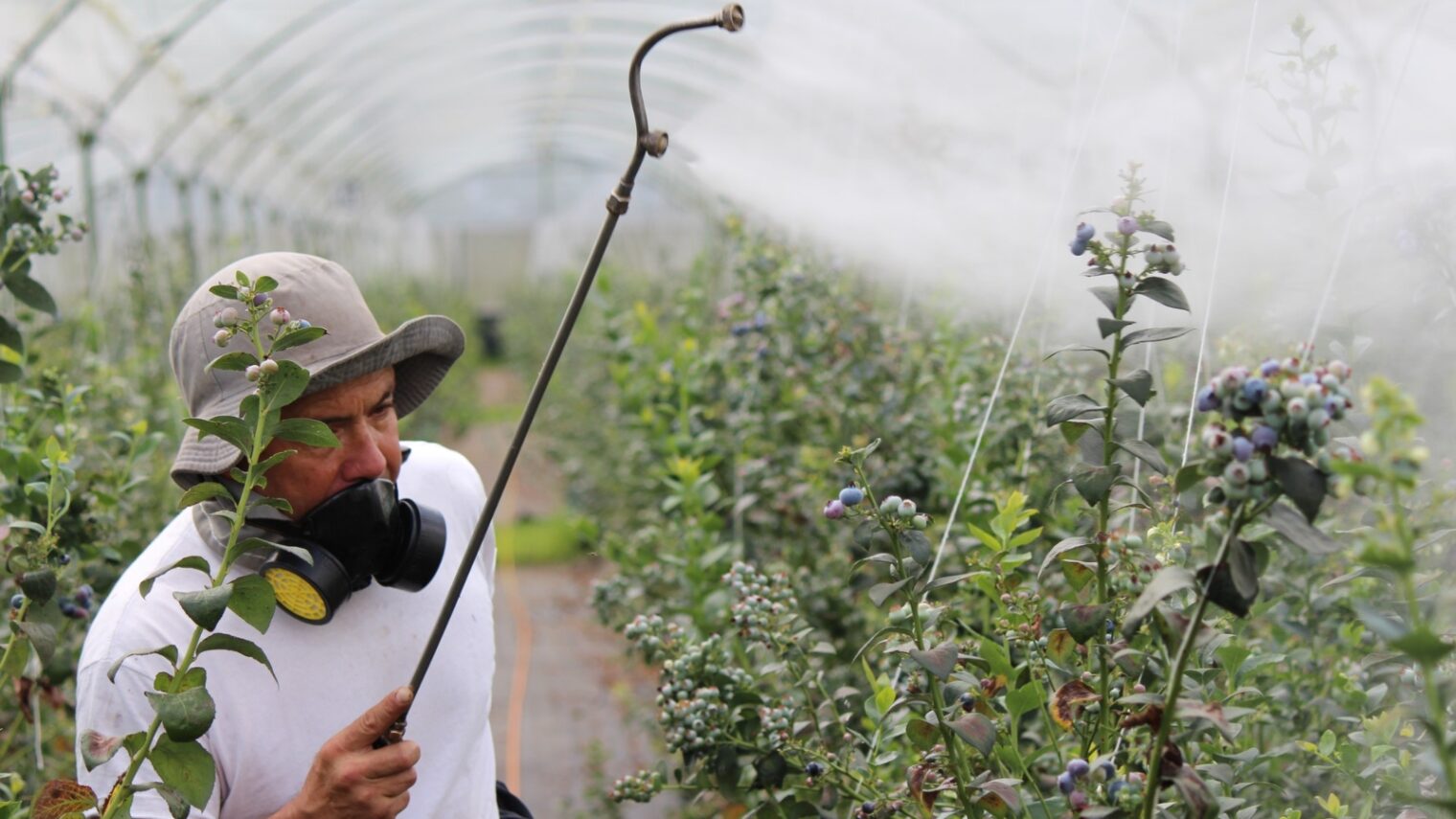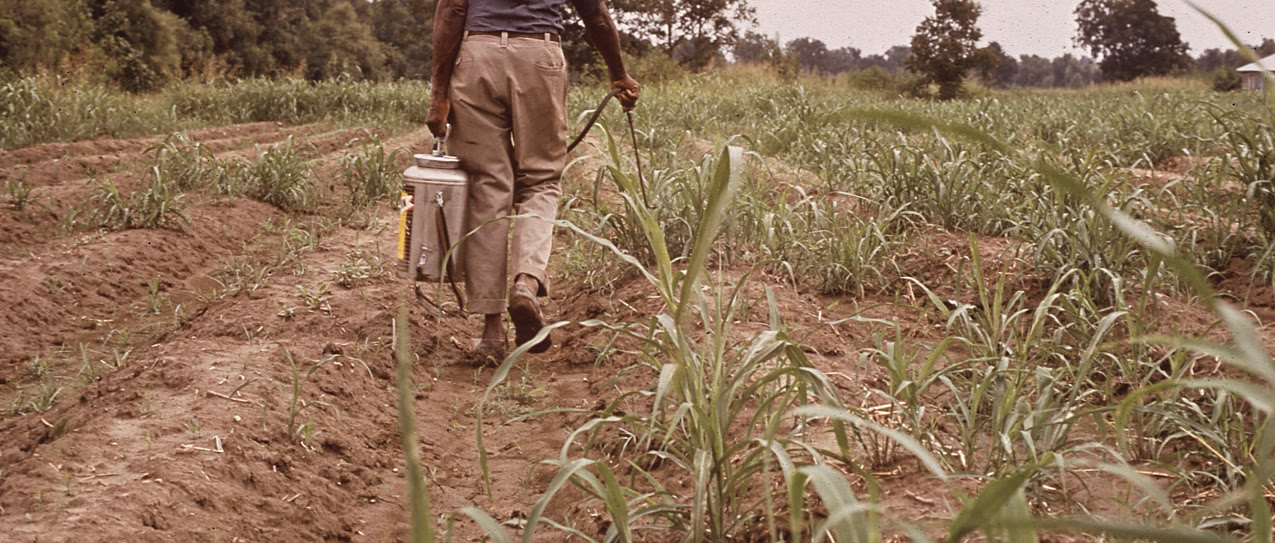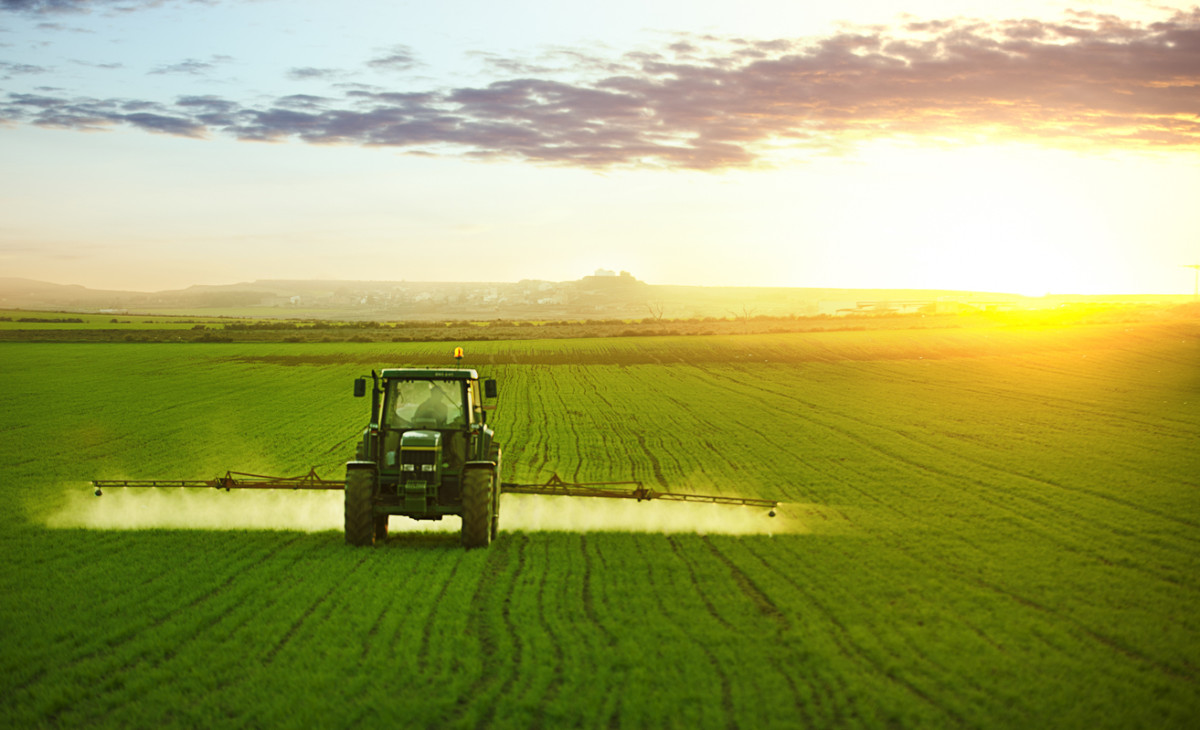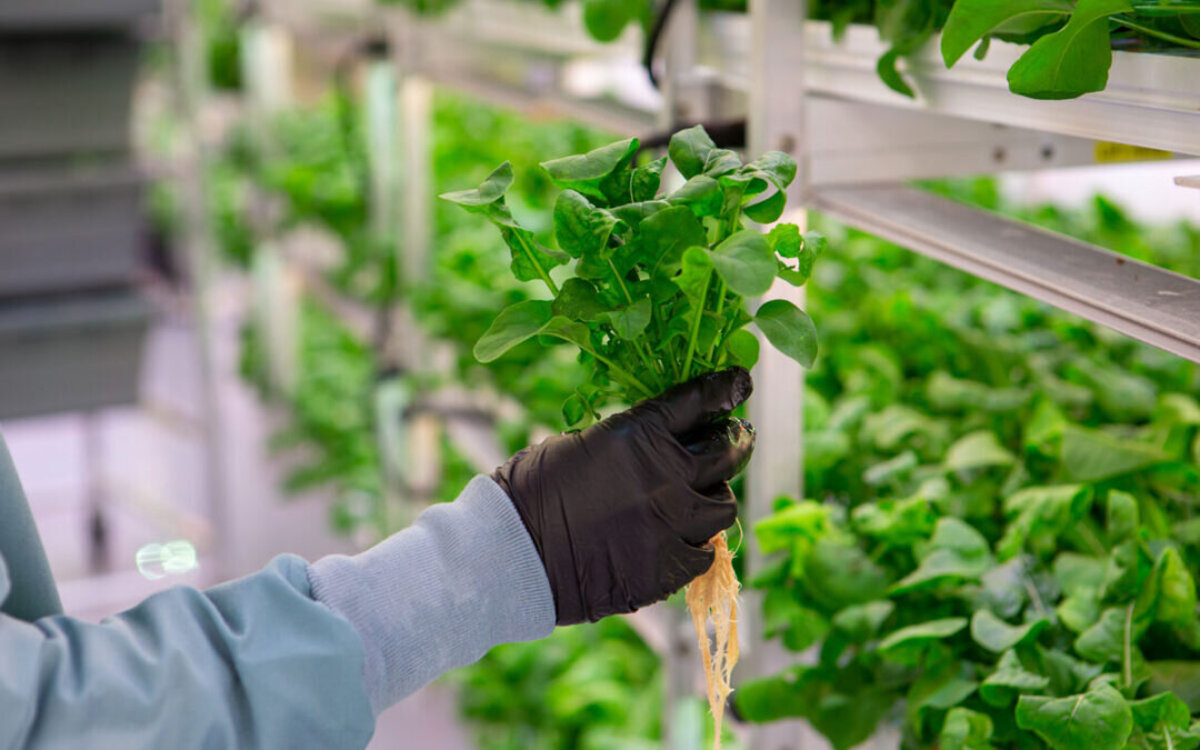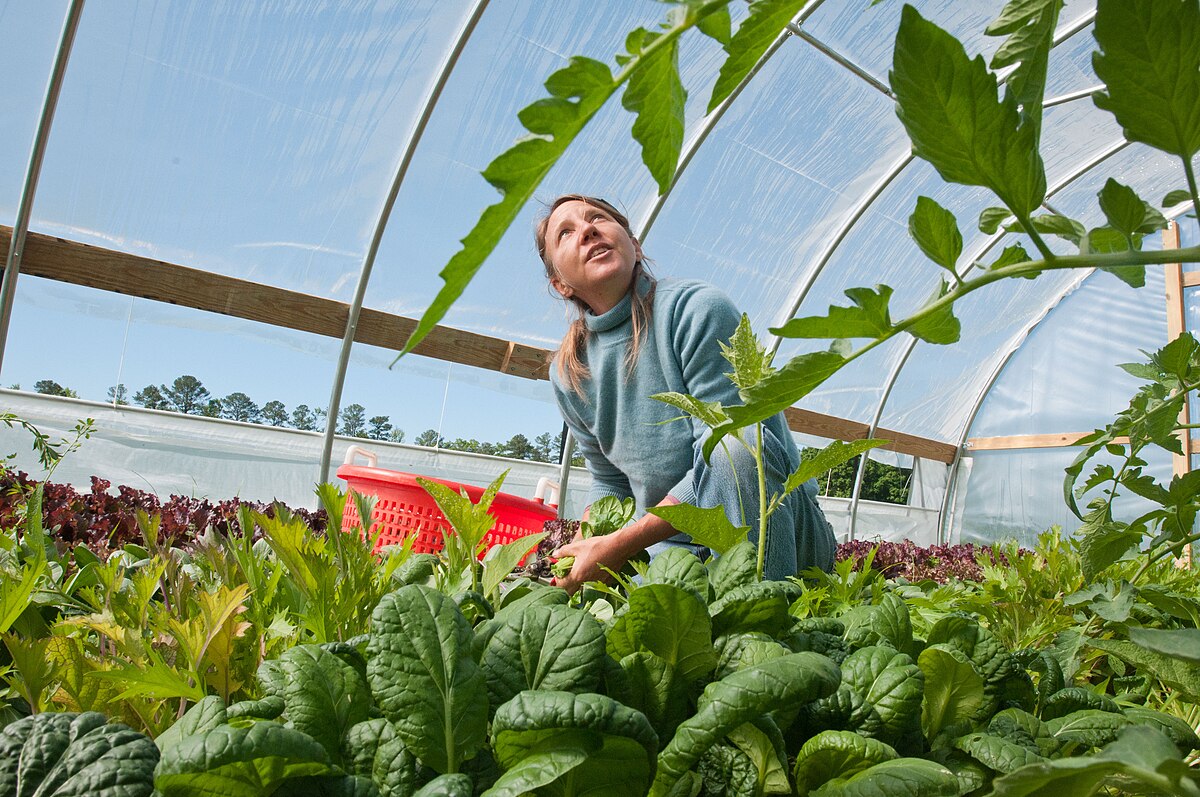Home>Gardening News and Trends>Latest News>Why Must Farmers Be Careful About The Pesticides They Use
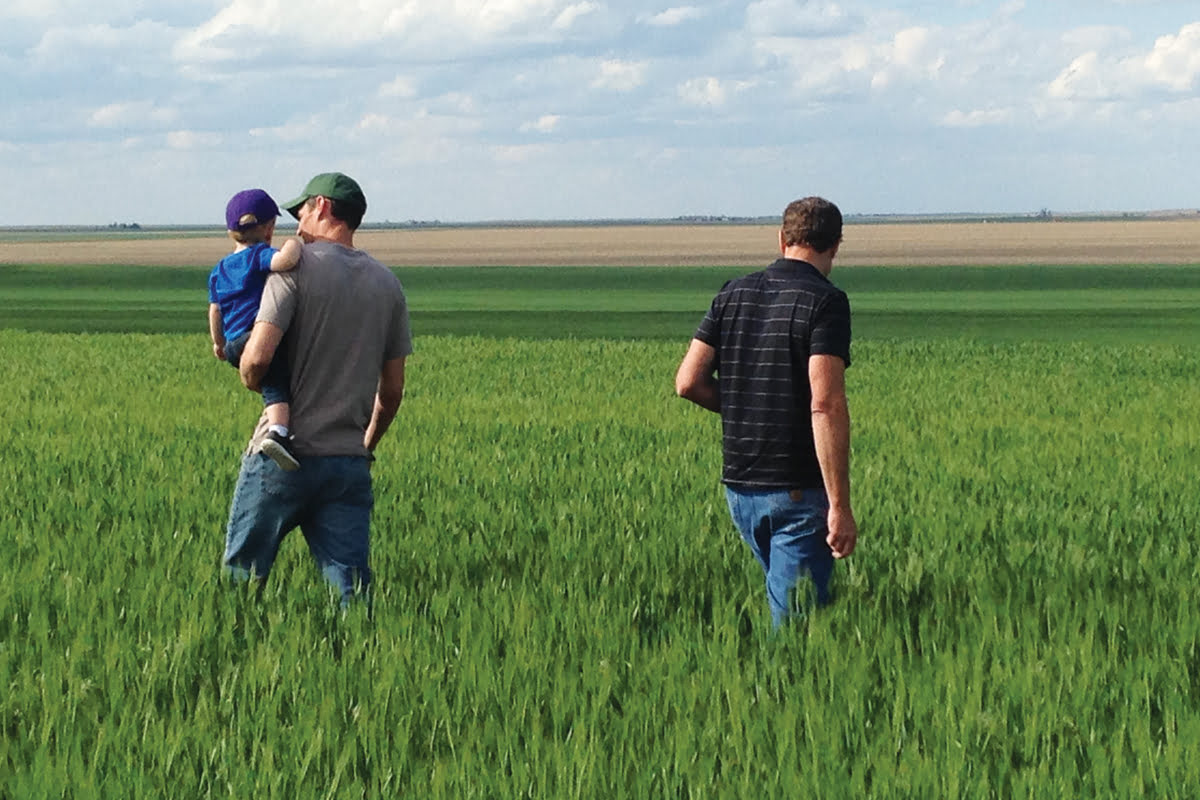

Latest News
Why Must Farmers Be Careful About The Pesticides They Use
Published: November 27, 2023
Discover the latest news on why farmers must be cautious about the pesticides they use.
(Many of the links in this article redirect to a specific reviewed product. Your purchase of these products through affiliate links helps to generate commission for Chicagolandgardening.com, at no extra cost. Learn more)
Table of Contents
Introduction
As the global population continues to grow, ensuring food security has become a pressing issue. Farmers play a critical role in meeting the increasing demands for agricultural produce. However, they face numerous challenges, including pest infestations that can significantly reduce crop yields.
To combat pests, farmers often rely on pesticides – chemical substances designed to kill or control pests. While pesticides can be effective in protecting crops, they also pose potential health hazards to farmers and the environment. It is crucial for farmers to exercise caution and make informed decisions about the pesticides they use.
Pesticides are formulated to kill or inhibit the growth of pests, which can include insects, fungi, weeds, and rodents. They come in various forms, including sprays, powders, granules, and baits. When applied correctly, pesticides can help farmers combat pests and preserve their crops. However, the misuse or overuse of pesticides can have severe consequences.
Various studies have linked exposure to pesticides to adverse health effects. Pesticides contain chemicals that may be toxic or carcinogenic. Prolonged or repeated exposure to these chemicals can lead to acute poisoning, respiratory problems, skin irritations, neurological disorders, and even cancer. Farmers, in particular, are at a higher risk of pesticide exposure due to their frequent handling and application of these chemicals.
In addition to the potential health risks, pesticides can also have detrimental effects on the environment. When pesticides are sprayed or applied to crops, they can contaminate soil, water sources, and air. This contamination can have far-reaching consequences, including the disruption of ecosystems and the decline of beneficial insects, such as bees and butterflies. These pollinators are crucial for crop production and biodiversity.
Furthermore, excessive use of pesticides can lead to the development of pesticide resistance in pests. Over time, pests can evolve and adapt to the chemicals, rendering the pesticides ineffective. This creates a cycle where farmers need to increase the dosage or switch to more potent pesticides, leading to further environmental and health risks.
Given these concerns, governments around the world have implemented legal regulations to govern the use of pesticides. These regulations aim to ensure the safe handling, storage, and application of pesticides, as well as restrict the use of highly toxic or banned substances. Farmers must be aware of and adhere to these regulations to protect themselves, their crops, and the environment.
In the following sections, we will delve deeper into the potential health hazards of pesticides, the environmental impacts they have, the strategies for pest management, and the best practices farmers can adopt to safely handle pesticides and safeguard their livelihoods.
Potential Health Hazards of Pesticides
The use of pesticides in agriculture carries inherent risks to human health. Exposure to these chemical substances can have both immediate and long-term consequences for farmers and workers involved in the application and handling processes.
One of the primary health concerns associated with pesticide exposure is acute poisoning. This occurs when individuals come into direct contact with pesticides or inhale their fumes. Symptoms can range from mild skin irritations, headaches, and dizziness to more severe reactions like nausea, vomiting, and respiratory distress. In extreme cases, acute pesticide poisoning can be fatal.
Furthermore, long-term exposure to pesticides can lead to chronic health issues. Many pesticides contain toxic compounds that have been linked to the development of various diseases, including cancer, reproductive disorders, and neurological impairments. Research has shown that farmworkers exposed to pesticides have a higher risk of developing lung, bladder, and prostate cancers.
Individuals working in close proximity to pesticide-treated fields are especially at risk. This includes farmers, agricultural workers, and their families who may live on or near farming areas. Pesticide residues can contaminate groundwater sources, raising concerns about the safety of drinking water for rural communities.
The impact of pesticide exposure extends beyond farmworkers to consumers as well. Residual pesticide levels on agricultural produce can pose health risks to those who consume them. While regulatory standards exist to limit the allowable levels of pesticides on food, concerns remain about the cumulative effect of long-term exposure to low levels of multiple pesticides.
Children are particularly vulnerable to the health effects of pesticide exposure. Their developing bodies and organs are more susceptible to the harmful impacts of pesticides. Studies have linked pesticide exposure in children to developmental delays, learning disabilities, and impaired neurological function.
To mitigate these health risks, it is crucial for farmers and agricultural workers to take precautionary measures when handling and applying pesticides. This includes wearing proper protective clothing, such as gloves, masks, and goggles, to minimize direct contact with pesticides. When mixing pesticides, farmers should follow recommended guidelines and avoid inhaling fumes by working in well-ventilated areas.
Regular training and education on pesticide safety are essential in empowering farmers to make informed decisions about pesticide use. This includes understanding the potential health hazards, proper handling techniques, and safety precautions to minimize exposure. Additionally, farmers should be vigilant about storing pesticides securely and disposing of empty containers responsibly.
By taking these proactive steps, farmers can protect their health and well-being while still effectively managing pests and ensuring a sustainable agricultural system.
Environmental Impacts of Pesticides
The use of pesticides in agriculture has significant environmental implications, affecting ecosystems, water resources, and biodiversity. While pesticides are intended to target pests and protect crops, they can have unintended consequences on the environment.
One of the primary concerns is pesticide contamination of soil and water sources. When pesticides are applied to fields, they can leach into the soil, potentially contaminating groundwater. Pesticide residues in water bodies can harm aquatic organisms, disrupting the balance of ecosystems. This can have a cascading effect on other species that rely on these ecosystems for survival.
Pesticides also pose a threat to non-target beneficial organisms, such as pollinators like bees and butterflies. These creatures are essential for the pollination of plants, including many crops. Exposure to pesticides can lead to declines in their populations, which can have far-reaching consequences for agricultural productivity and ecosystem biodiversity.
The persistence of certain pesticides is another environmental concern. Some pesticides can persist in the environment for extended periods and accumulate in the food chain. This bioaccumulation can have detrimental effects on wildlife and can even pose risks to humans who consume contaminated organisms.
Furthermore, the overuse or misuse of pesticides can lead to the development of pesticide resistance in target pests. As pests become resistant to particular pesticides, new, stronger chemicals are often introduced as replacements. This not only increases the risk of environmental contamination but also perpetuates a cycle of pesticide dependence, further exacerbating the issues associated with their use.
To mitigate the environmental impacts of pesticides, farmers can adopt alternative pest management strategies. Integrated Pest Management (IPM) is an approach that focuses on minimizing the use of chemical pesticides by combining various methods to control pests effectively.
IPM strategies include practices such as crop rotation, the use of resistant crop varieties, biological control methods, and the implementation of physical barriers. These methods reduce reliance on chemical pesticides, protect beneficial organisms, and promote a more balanced and sustainable agricultural ecosystem.
Additionally, precision agriculture technologies can help farmers optimize pesticide use. The use of sensors, satellite imagery, and data-driven approaches enable farmers to target specific areas in need of treatment, reducing the overall amount of pesticides used.
Government regulations also play a crucial role in addressing the environmental impacts of pesticides. Many countries have implemented restrictions on the use of certain pesticides, particularly those with high toxicity or long persistence. These regulations encourage the adoption of safer alternatives and promote sustainable farming practices.
By considering the environmental impacts of pesticides and adopting more sustainable approaches, farmers can protect ecosystems, preserve biodiversity, and contribute to a healthier and more resilient agricultural system.
Resistance and Pest Management
Pesticide resistance is a significant challenge in pest management. Over time, pests can develop genetic adaptations that make them less susceptible to the effects of pesticides. This poses a threat to agricultural productivity and necessitates the development of new pest management strategies.
The overreliance on a single pesticide or a narrow range of pesticides is a key contributor to the development of resistance. When pests are repeatedly exposed to the same pesticide, a small percentage may have inherent resistance. These resistant individuals can survive, reproduce, and pass on their resistance genes to the next generation, leading to a decline in the effectiveness of the pesticide.
To combat resistance, farmers need to implement integrated pest management (IPM) strategies. IPM focuses on using a combination of cultural, biological, and chemical control methods to manage pests effectively while minimizing reliance on pesticides.
Cultural control methods involve practices that disrupt pest habitats and reduce their population density. This can include techniques like crop rotation, fallowing fields, and proper sanitation to eliminate pest breeding sites. By implementing these practices, farmers can break the pest life cycle and reduce the need for chemical intervention.
Biological control methods involve the use of natural enemies, such as predators, parasitoids, and pathogens, to regulate pest populations. These beneficial organisms can prey on or infect pests, effectively reducing their numbers. Biological control is an environmentally friendly approach that can be integrated with other pest management strategies to enhance their effectiveness.
Chemical control, while a component of IPM, should be used judiciously and as a last resort. It is essential to rotate between different classes or modes of action of pesticides to avoid overexposure to a single chemical and to minimize the risk of resistance development. Integrated pest management programs typically involve monitoring pest populations, using economic thresholds to determine the need for intervention, and utilizing targeted, low-impact pesticides.
Ongoing research and development of new pest management technologies and approaches are crucial in addressing resistance issues. This includes the development of pesticide formulations with multiple modes of action, which can target pests with different mechanisms and reduce the likelihood of resistance development.
Education and extension services play a vital role in promoting effective pest management practices. Providing farmers with information on the latest research and best practices can help them make informed decisions and implement integrated approaches. Collaboration between farmers, researchers, and extension services can support the dissemination of knowledge and the adoption of sustainable pest management strategies.
By embracing integrated pest management and employing a diverse range of strategies, farmers can mitigate resistance development and maintain long-term pest control efficacy, ensuring the sustainability of their agricultural practices.
Legal Regulations for Pesticide Use
Recognizing the potential risks associated with pesticides, governments worldwide have implemented legal regulations to govern their use. These regulations aim to protect human health, the environment, and ensure the responsible and safe handling and application of pesticides.
The specific regulations surrounding pesticide use can vary from country to country, but they typically include requirements for pesticide registration, labeling, storage, handling, application, and disposal. Pesticide manufacturers must undergo a rigorous registration process that involves scientific evaluation to determine the safety and efficacy of the products.
Pesticide labels provide critical information on safe handling, dosage rates, application techniques, and precautions. These labels are legally binding, and it is the responsibility of farmers and pesticide users to follow the instructions outlined on them. Failure to do so can result in legal repercussions.
Storage and handling requirements dictate how pesticides should be stored to prevent leaks, spills, or contamination. Pesticides should be kept in secure, designated areas away from food, water sources, and livestock. Proper handling practices, such as wearing protective clothing, using designated mixing and loading areas, and ensuring proper ventilation, are essential to minimize the risk of exposure.
Application guidelines specify how pesticides should be applied to crops and the safety measures that should be followed during the process. This includes recommendations for the use of protective equipment, proper calibration of spray equipment, and guidelines on weather conditions suitable for application to reduce the risk of drift and off-target damage.
Disposal requirements dictate how empty pesticide containers should be handled and disposed of to minimize environmental contamination. Proper disposal often involves triple-rinsing containers, puncturing or crushing them to render them useless, and delivering them to designated collection points or recycling facilities.
Legal regulations also govern the use of highly hazardous pesticides (HHPs), which are characterized by their high toxicity and potential for substantial adverse effects. Many countries have imposed bans or restrictions on the use of specific HHPs, based on their potential risks to human health and the environment.
Penalties and enforcement mechanisms are put in place to ensure compliance with pesticide regulations. Farmers found to be in violation of these regulations may face fines, loss of certification, or even legal action depending on the severity of the offense.
These legal regulations play a crucial role in safeguarding human health, minimizing environmental harm, and promoting responsible pesticide use. It is the responsibility of farmers and pesticide users to stay informed about their country’s regulations, seek appropriate training, and adhere to best practices for the safe and responsible handling and use of pesticides.
Best Practices for Safe Pesticide Handling
Safe handling of pesticides is vital to protect the health and safety of farmers, agricultural workers, and the surrounding environment. Adhering to best practices for pesticide handling can reduce the risk of exposure and minimize negative impacts on human health and ecosystems.
One of the most crucial aspects of safe pesticide handling is wearing appropriate personal protective equipment (PPE). This includes gloves, goggles, masks, and protective clothing that covers exposed skin. PPE acts as a barrier between the skin and eyes and the pesticide, reducing the risk of direct contact and absorption.
Proper storage of pesticides is another essential component of safe handling. Pesticides should be stored in a secure, dedicated area away from food, water, and livestock. The storage area should be well-ventilated and be equipped with effective containment measures to prevent leaks or spills from contaminating the surrounding environment.
When mixing pesticides, it is important to follow the recommended dosage rates and application techniques. Farmers should carefully measure and mix pesticides according to the instructions on the label, using dedicated equipment that is not used for any other purpose. Avoiding overdosing or underdosing is crucial for both effective pest control and minimizing unnecessary exposure.
During the application process, farmers should take precautions to avoid drift and minimize off-target damage. This includes monitoring weather conditions, avoiding application on windy days, and using appropriate nozzle types and pressure settings on sprayers. Applying pesticides when the target pests are most vulnerable and when beneficial organisms like bees are less active can also minimize the risk of unintended harm.
Proper disposal of empty pesticide containers is essential to prevent environmental contamination. Containers should be triple-rinsed with water to remove any leftover residue. Puncturing or crushing the containers can render them unusable and reduce the risk of accidental reuse. Empty containers should be disposed of in designated collection points or recycling facilities, following local regulations.
Regular training and education on pesticide handling and safety practices are vital for farmers and agricultural workers. Ongoing training programs, led by agricultural extension services or industry experts, can provide updated knowledge on best practices, new regulations, and emerging technologies. Training can help farmers make informed decisions, enhance their skills, and promote a culture of safety within the agricultural community.
Finally, maintaining clear communication between farmers and workers regarding pesticide use is crucial. Language barriers should be overcome, and clear instructions should be provided to ensure everyone understands the risks associated with pesticides and the necessary safety precautions to be followed.
By adhering to these best practices for safe pesticide handling, farmers can effectively manage pests while minimizing the adverse effects on human health and the environment. Prioritizing safety and following proper procedures is essential for the sustainability and well-being of agricultural systems.
Integrated Pest Management (IPM) Methods
Integrated Pest Management (IPM) is an effective approach to pest control that combines various strategies to manage pests while minimizing reliance on chemical pesticides. IPM aims to achieve long-term pest control through the integration of biological, cultural, and chemical control methods.
Biological control is a key component of IPM and involves the use of natural enemies to regulate pest populations. This can include the release of beneficial insects, such as ladybugs or parasitic wasps, that feed on pests. Biological control methods are environmentally friendly, as they target pests specifically without harming beneficial organisms.
Cultural control methods focus on altering the growing environment or agricultural practices to reduce pest populations. This can include crop rotation, which helps disrupt the life cycle of pests, and the use of resistant crop varieties, which naturally have higher tolerance to certain pests. Other practices, such as trap cropping or the use of physical barriers, can help divert pests away from main crops and protect them from damage.
Chemical control, though minimized in IPM, is still considered when necessary. The key principle is to use pesticides only when economically and ecologically justified. When selecting pesticides, preference is given to those with lower toxicity to humans and non-target organisms. Furthermore, pesticides are applied in a targeted manner, with consideration of the pest life cycle and the prevention of the development of pesticide resistance.
An important aspect of IPM is regular monitoring of pest populations. By closely monitoring pest activity, farmers can determine the appropriate timing and level of intervention. Economic thresholds are used as a guideline to determine when the pest density has reached a level that justifies the use of control measures. This helps prevent unnecessary pesticide applications and reduce the likelihood of resistance development.
Adopting IPM requires a shift from reactive to proactive pest management. Rather than relying solely on chemical pesticides as a quick fix, IPM emphasizes preventive measures and long-term pest control. It requires a thorough understanding of the pest biology, cultural practices, and the integration of different control methods.
Education and training play a crucial role in promoting IPM practices. Farmers need to be aware of the benefits of IPM and equipped with the knowledge and skills to implement it effectively. Collaborative efforts between farmers, researchers, and extension services are vital in disseminating information, conducting research, and offering support to ensure the successful adoption of IPM.
By implementing IPM methods, farmers can reduce their reliance on chemical pesticides, protect beneficial organisms, and promote a more sustainable and environmentally friendly approach to pest management. IPM not only helps maintain healthy crop yields but also preserves ecosystem balance and contributes to the long-term sustainability of agriculture.
Conclusion
The use of pesticides in agriculture is a necessary tool to protect crops and ensure food security. However, it is essential for farmers to prioritize the safe handling and responsible use of pesticides to mitigate potential health hazards and environmental impacts.
The potential health hazards of pesticides highlight the importance of protective measures, such as wearing personal protective equipment and following proper handling guidelines. Farmers must also be aware of the long-term effects of pesticide exposure and take proactive steps to minimize risks.
The environmental impacts of pesticides underscore the need for sustainable pest management strategies. Integrated Pest Management (IPM) provides a holistic approach that combines biological, cultural, and chemical control methods to reduce reliance on pesticides while maintaining effective pest control.
Legal regulations are in place to ensure the safe use of pesticides. Farmers must comply with these regulations to safeguard their own well-being, protect the environment, and meet the standards set forth by governing bodies.
Best practices for safe pesticide handling, such as proper storage, responsible application, and appropriate disposal, are crucial to minimize environmental contamination and protect the health and safety of farmers and workers.
By adopting Integrated Pest Management (IPM) methods and implementing sustainable pest management practices, farmers can strike a balance between pest control and environmental stewardship.
In conclusion, farmers must exercise caution and make informed decisions about the pesticides they use. By prioritizing safety, adhering to regulations, and embracing sustainable pest management practices, farmers can protect their health, preserve the environment, and contribute to a more resilient and sustainable agricultural system.
